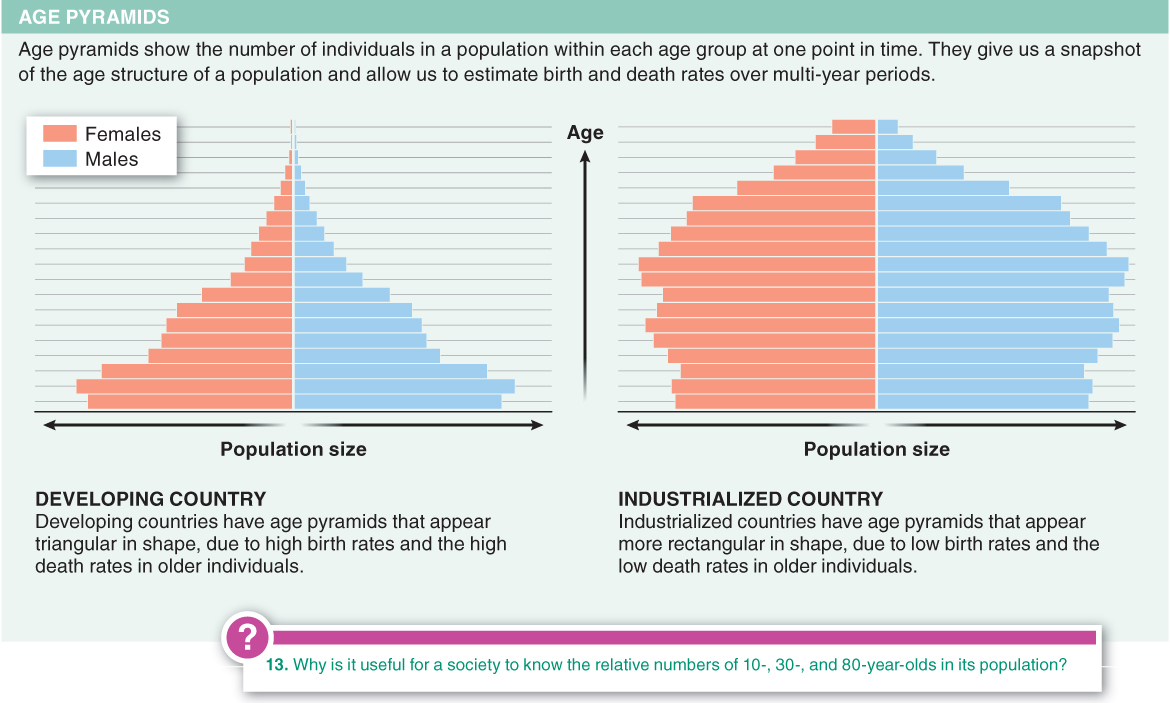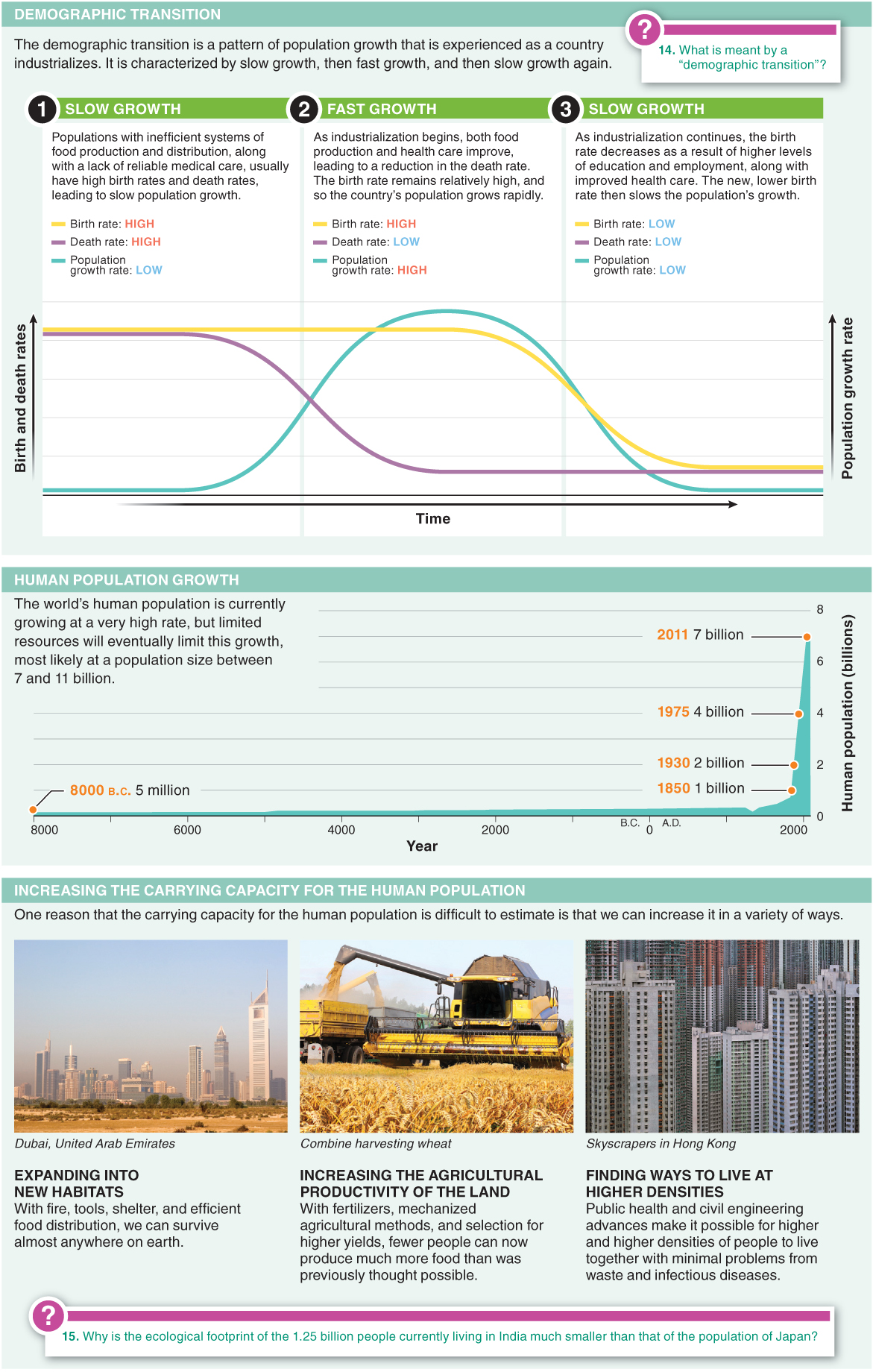14.1.9 14.14–14.16: The human population is growing rapidly.
In humans, current birth rates exceed death rates by so much that we add 80 million people to the world population each year!

607

Question 14.27
Life extension:
- a) is not possible, because natural selection cannot weed out disease-
causing alleles that have an effect only at an age when reproduction is no longer possible. - b) can be achieved by selectively breeding those individuals that have the earliest age of maturity.
- c) works in insects but could not work in humans.
- d) has been achieved using laboratory selection for delayed reproduction.
- e) None of the above are true.

Question 14.28
A population pyramid:
- a) represents the number of individuals in various age groups in a population.
- b) can be constructed from the data in a life table.
- c) directly predicts future age distributions of the population.
- d) shows the current birth and death rates of a population.
- e) predicts survival and mortality rates for an individual at a given age.

Question 14.29
A primary difference between the age pyramids of industrialized and developing countries is that:
- a) mean longevity is significantly greater in developing countries.
- b) in developing countries, much larger proportions of the population are in the youngest age groups.
- c) developing countries show a characteristic “bulge” that indicates a baby boom.
- d) in developing countries, females live significantly longer than males, whereas in industrialized countries the reverse is true.
- e) developing countries have significantly more individuals than industrialized countries.

Question 14.30
Which statement best describes expectations for the world’s human population by the year 2015?
- a) It will exceed 10 billion if the current rate of increase continues.
- b) Negative growth in the United States and Europe will counterbalance positive growth in the developing countries.
- c) It will exceed 7.5 billion if the current rate of increase continues.
- d) It will drop below 6 billion if the current rate of decrease continues.
- e) The problem is too complex to make any predictions.
